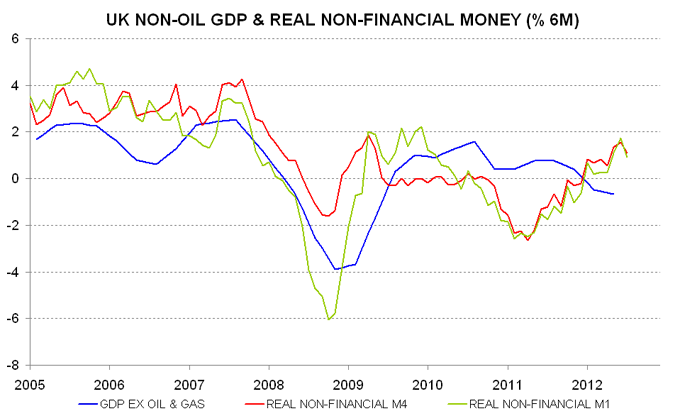UK monetary trends continue to signal an economic pick-up in late 2012, in contrast to consensus gloom. Stronger nominal money growth, however, will face an increased inflation headwind over coming months, probably preventing further real acceleration. This highlights the economic cost of the Bank of England’s failure to achieve its inflation target.
Underlying monetary trends are arguably best assessed using money supply measures that exclude the volatile holdings of financial corporations. Non-financial M4 and M1 (i.e. covering holdings of households and private non-financial corporations) rose by 4.6% and 4.1% in the 12 months to July – the strongest since September 2008 and July 2010 respectively.
The chart compares the two-quarter change in GDP excluding oil and gas extraction with six-month changes in real non-financial M4 and M1 (i.e. deflated by seasonally-adjusted consumer prices, not annualised). Economic weakness in early 2012 followed real money contraction in 2011. The real money measures have recently expanded at rates last reached in 2009-10 ahead of a period of solid economic growth.
Real money expansion, however, may stabilise or fall back slightly over coming months as inflation rebounds. The inflation forecast presented in a post last week implies that the six-month change in seasonally-adjusted consumer prices will rise from 1.0% in July to 2.1% by January 2013 (not annualised). Nominal money trends may not improve sufficiently to offset this increased drag. Such a scenario would suggest a stabilisation of economic growth next spring following a pick-up over the winter.
